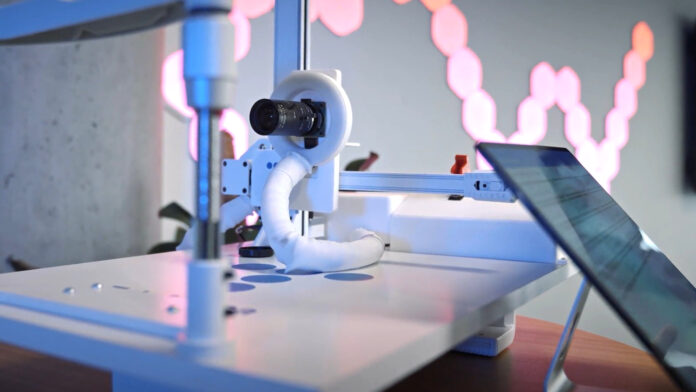Spain-based Telefónica’s big 5G showcase at the industry’s big 5G showcase, at MWC in Barcelona next month, will feature a pair of healthcare solutions, among other things. These will show how a public 5G network can be used to carry patients’ IoT data from portable 5G devices to AI engines in its own edge-based compute engines. They are designed for use in ophthalmology and oncology – to monitor and diagnose patients with eye problems and cancer, respectively.
The first is called CatEye (pictured), and is developed with engineering company Edgendria Innovación; it determines whether patients’ cataracts require surgical intervention. The second, called Pointcheck, is developed with startup company Leuko, and monitors low-levels of white blood cell levels in cancer patients to guard against infection. It is a pilot. Telefónica said they seek to put “technology at the service of patients and healthcare professionals”.
Usage of 5G for the data transport enables some mobility, depending on the medical device, and higher data transmission capacity and lower latency, it said – as per the standard line on the benefits of faster and fatter 5G networks. The CatEye product comprises a 5G device with a “specific” autonomous camera and a “specialised optics platform with precision servomotors”. The camera takes a photograph of both eyes and sends it on 5G to an AI in Telefónica’s edge.
The AI decides whether the cataract requires intervention by an ophthalmologist. So says a press note, stating: “The aim is to help specialist ophthalmologists to delegate certain tasks to their team so that they can intervene at the right time”. The device is “relatively easy to transport”, meaning it also enables diagnosis / monitoring where patients cannot get to a hospital – but have access to a 5G signal. Edgendria Innovación designed and built the device, and also integrated the AI into it.
The Pointcheck device is for critical cancer patients who may suffer from lower-than-normal levels of white blood cells (neutropenia; neutrophils) in their blood as a result of their conditions. A neutrophil level of less than 500/µl entails a high risk of infection, apparently. The device is non-invasive; it allows a video capture of the blood circulation in the capillaries of the patients’ ring finger, which is carried over 5G and analysed by an AI algorithm in a Telefónica edge node.
The addition of 5G to the PointCheck device means patients (and pharmacists) can perform the test themselves – “reliably, securely, and with sufficient latency and bandwidth to be able to transmit the video with the metadata captured during the measurement to the algorithm for analysis”. The edge aspect maintains the “sovereignty and security of the medical data”, said the operator. The idea is to save hospital trips and hospital resources, and to improve healthcare overall.
Both will feature as part of an IoT-in-healthcare session at MWC (in the Telefónica Agora; March 5, at 11:30am).
Micaela Martelli, director of sector solutions at Telefónica Spain, said: “Healthcare in Spain faces several challenges due to the fact that we have one of the highest longevity rates in the world, which implies an increase in chronic diseases… Technology helps to improve the planning and efficiency of the healthcare system, as well as to optimise the patient experience. 5G… enables the development of technological projects focused on solving specific medical situations.”

